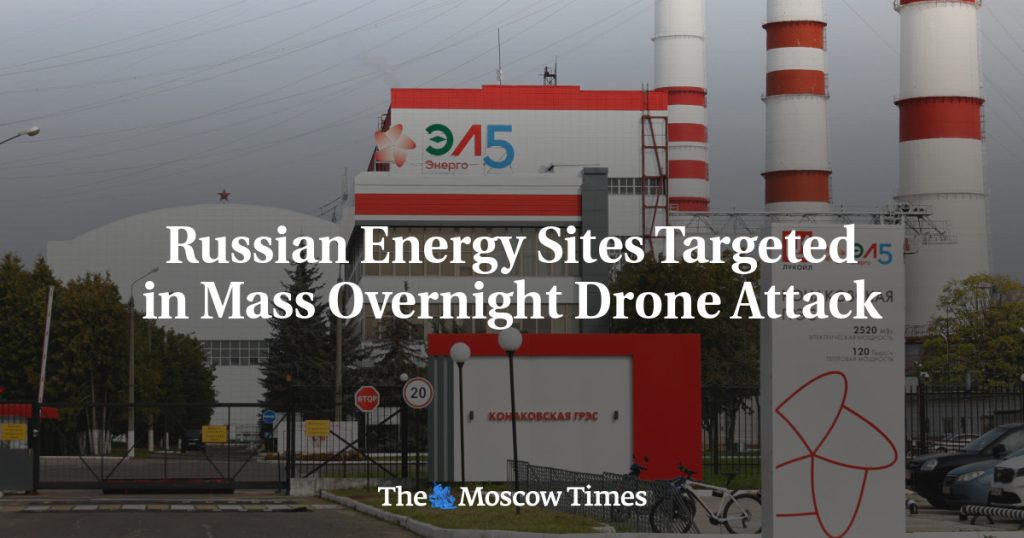Russia’s Defense Ministry recently announced that its air defense systems had successfully intercepted and destroyed almost 160 Ukrainian drones in a coordinated attack across 15 regions, including two over Moscow. The attack is considered one of the largest since the start of the ongoing war between Russia and Ukraine. The Defense Ministry stated that the Kyiv regime attempted a terrorist attack using fixed-wing drones against Russian targets, with most of the drones being destroyed in border regions such as Kursk, Bryansk, Voronezh, and Belgorod. This incident follows a similar attack where over 200 Russian drones and missiles targeted Ukraine’s energy infrastructure, marking a significant escalation in the conflict.
During the recent drone attack, a coal-fired power plant near Moscow was reportedly hit, along with a Gazprom-owned oil refinery within the city’s boundaries. Moscow Mayor Sergei Sobyanin reported that another drone damaged a technical room at the Moscow Refinery, causing a small fire. Additionally, in the Tver region, authorities reported the downing of at least five drones in the area of the Konakovo thermal power station, with unverified videos showing a drone crashing into the plant, resulting in a large explosion. The attacks led to dozens of flights being delayed or rerouted across Russia, as reported by the RBC business news outlet.
Both Russia and Ukraine have intensified their attacks on each other’s energy infrastructure in recent months. The Ukrainian forces aim to hinder Moscow’s capacity to carry out military operations by targeting critical energy facilities. This strategy is part of the broader conflict between the two countries and has resulted in significant disruptions and damages to infrastructure on both sides. The attacks on energy infrastructure are seen as a strategic move to weaken the opponent’s capabilities and gain a military advantage in the ongoing conflict.
The ongoing conflict between Russia and Ukraine has seen an escalation in hostilities with various military engagements and attacks on critical infrastructure. The recent drone attacks on Russian territory by Ukrainian forces represent a significant development in the conflict and highlight the growing capabilities of both parties in using unmanned aerial vehicles for military purposes. The use of drones in warfare has become increasingly common, allowing for precision strikes and strategic targeting of enemy assets, including infrastructure targets like power plants and oil refineries.
The response from the Defense Ministry indicates that the Russian military was able to effectively detect, intercept, and destroy the incoming drones, preventing significant damage to critical infrastructure in the country. The successful defense against the drone attacks demonstrates Russia’s air defense capabilities and readiness to respond to threats to its territory. The attacks and subsequent responses also underscore the evolving nature of modern warfare, where advanced technologies like drones play an increasingly prominent role in military operations and tactics employed by warring parties.
As the conflict between Russia and Ukraine continues, the targeting of energy infrastructure and critical facilities has become a key aspect of the ongoing hostilities. Both sides are engaged in a war of attrition, seeking to weaken each other’s capabilities and gain strategic advantages through targeted attacks. The recent drone attacks in Russia and the subsequent response highlight the complex and volatile nature of the conflict, with both parties resorting to unconventional tactics to achieve their military objectives. The attacks on energy facilities have broader implications for the stability and security of the region, as disruptions in energy supply can have far-reaching consequences for both countries and the wider international community.


